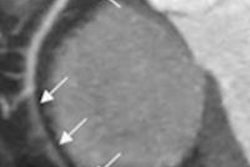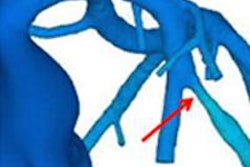Wednesday, December 4 | 3:50 p.m.-4:00 p.m. | SSM20-06 | Room S404AB
CT with iterative reconstruction is racking up points throughout the body for high-resolution imaging at low doses, but improved detector technology also is an important part of the picture in boosting the quality of low-dose imaging, according to German researchers.In a study that combined the two advances, they evaluated the influence of higher out-of-plane resolution and iterative reconstruction algorithms on the visualization of coronary artery stents at coronary CT angiography using an integrated circuit CT detector.
"Our study assessed the implementation of an integrated circuit detector element combined with an iterative reconstruction algorithm on the accurate visualization of small-sized stents," Dr. Lucas Geyer told AuntMinnie.com. "Improvements of coronary artery stent CT imaging provided by recent technical advances might decrease the need for catheterization providing a less invasive means for diagnostic evaluation."
The study team from Ludwig-Maximilians University in Munich looked at several coronary artery stents from 2 mm to 3 mm in diameter, acquired on a second-generation dual-source CT scanner using a moving phantom at two different heart rates. Images were reconstructed with sinogram-affirmed iterative reconstruction (SAFIRE, Siemens Healthcare) at both 0.75-mm and 0.50-mm section thicknesses.




















